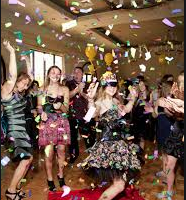Women’s Challenges in Israeli Life
Until Vicky Knafo demonstrated in front of the Knesset last year to protest cuts in benefits to single mothers, women had been almost entirely absent from recent discussions about the political and economic crises in Israel. Two recent books portray Israeli women’s achievements and struggles in recent years. Jewish Feminism in Israel: Some Contemporary Perspectives, edited by Kaplana Misra and Melanie S. Rich (Brandeis University Press/University Press of New England, $24.95), describes many of the unique aspects of Israeli society, and their impact on women. The kibbutz experience, the politicization of religion, militarization and peace movements, violence against women, and new feminist Israeli art are all discussed in this collection.
Marcia Friedman, one of the first self-identified Israeli feminists, surveys Israeli Jewish feminism at the end of the twentieth century. Not until the mid-1990s did Israeli feminism expand to include the concerns of Mizrachi, Arab, Ethiopian, and Russian-born women. In another chapter, Mizrachi scholar and activist Henriette Dahan-Kalev observes that Mizrachi feminists, like North American black feminists, need to address two issues simultaneously—their oppression as women in a patriarchal Israeli society, and their subordinate ethnic status in Israel’s Ashkenazi-dominated culture. Gila Svirsky, one of the founders of Women in Black, gives a history of this group, the largest and most visible of the women’s peace movements in Israel, as well as the context for its creation amid other mixed-gender Israeli peace groups and Israel’s militarized society. Irit Umanit links domestic violence with Israel’s culture of siege and military preparedness.
These and other provocative issues are reflected in new feminist art in Israel. Curator Tami Katz Freiman presents a visually arresting chapter which features images from an exhibit she organized in 1994, titled “Meta-Sex 94: Identity, Body, and Sexuality.” According to Katz Freiman, these feminist artists challenge the Zionist ideology of the “right body”(healthy, male, fighting, macho) with images that “reflect the feminist discourse of the body’s deconstruction.”
Portraits in Passion: Vision and Values of American-Israeli Women, by Anita I. Jacobs with Miriam K. Landau (1st Books Library, $10.50; also available as an E-book: see www.lstbooks.eom) originated as a project the author undertook while spending a year in Israel as a Melton Senior Educator Fellow at Hebrew University. Jacobs profiles 21American-born women who immigrated to Israel. Many made aliya in midlife, after they had established families, careers, and other commitments in the United States. Entrepreneurs, cantors, educators, musicians, political activists, marriage educators, and broadcasters are among the women who inspired Jacobs in this book. Yet despite their accomplishments, there’s a certain flatness to their narratives. And though these women are all native English speakers, their words often sound stilted, evoking a poor translation from Hebrew, as when one teacher explains, “The school is now producing kids that society decides are needed.” It’s a shame, because these women’s stories are inspirational and should be in an appealing format.
In this difficult time in the Middle East, these two volumes demonstrate Israeli women’s resilience, creativity, and determination to change their realities and the limitations which hem them in.
Susan Sapiro holds an M.A. in Gender Studies. She researches gender issues in contemporary Judaism.


